If you want to examine the material in a particular Market, select a market segment using the Market button above. Once you have read the information, select Markets to return to Markets page. Other links will take you to other destinations.
Asphalt
Asphalt pavements have been in use for many years. Originally, roads were just paths or tracks. These roads were subject to weather conditions, and could turn into muddy quagmires during times of rain. In order to overcome those difficulties, the Romans, realised that easy access improved the wealth from, and accessibility to every part of their Empire. They began to build superior, paved roads, using cobbles, slag, and other dressed stone pavers. Whilst the systems were extremely durable, the cost of cutting and laying the paved roads was exorbitant.
 |
Other road surfacing methods developed, using crushed and broken rock. Unfortunately, these roads were also subject to the weather, and the roadways were often damaged. The stone, used as a trafficable surface, was not always stable enough to provide good surfaces and could be dislodged from the road bed.
Tar was later used to stabilise broken rock roadways. The tar was flowed into the gaps between stone laid to provide a better surface. The tar, obtained from tar pits, stabilised the stone and helped to prevent water ingress. The system known as Tarmac followed later. Tarmac was a method of mixing graded stone with the tar and then laying the mixture over previously laid and levelled stone substrates. Later, as distilling crude oil became viable, the heavy residue distillates became available. The heavy residue was known as bitumen.
Bitumen is in regular supply, wherever petroleum distillation plants are sited. The thick, tar-like substance has been assimilated by road builders for use as a road binder. The substance provides excellent qualities as a road material, as it helps to hold the rock particles in place, through its adhesive qualities. In addition, it is an excellent waterproofer. Over time, however, newer distillation, and catalytic cracking methods have developed. These extract more high value distillates from the crude oil. Unfortunately, this, removes many of the excellent adhesive and waterproofing qualities from the basic bitumen, as originally used.
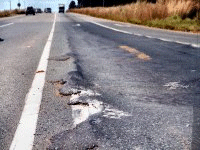 |
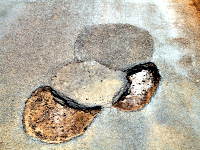 |
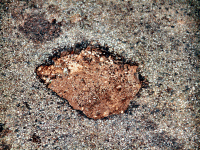 |
 |
The much higher axle loadings, and traffic frequency, coupled with a less adhesive bitumen, have led to numerous difficulties in maintaining road integrity. Also, road maintenance has fallen behind requirements. Shoulder rehabilitation, potholing, and rutting are rife, when poor maintenance regimes are followed. Shoulder degradation has become hazardous and they must be maintained. Potholing due to poor maintenance and traffic frequency occurs frequently. Rutting, surging, and pavement collapse, cause hazards at intersections, as well as on highly trafficked roads.
Stonerod basalt reinforcing mesh has been designed for reinforcing road and highway overlays to prolong the pavement lifespan. Reducing the effects of reflective cracking caused by traffic loading, age hardening, moisture exposure, and temperature cycling, makes reinforcing desirable. Pavement life between maintenance can be prolonged significantly, when asphalt is reinforced. The use of basalt reinforcing mesh makes it possible to reduce thickness of pre-mix asphalt pavements by up to 20%. Cost benefits result.
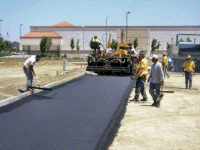 |
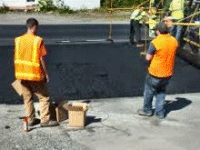 |
 |
 |
With fibre-enhanced pre-mix asphalt layers, the old, worn, or cracked, material is planed, or milled, to a suitable depth and the asphalt pre-mix in laid using conventional application techniques. Stonerod mesh may be laid over the milled and cracked pre-mix layer that has been given a bitumen tack coat. After the tack coat is applied, the mesh is simply rolled out and a conventional, or a fibre-reinforced pre-mix layer, is applied. It can also be applied under chip and spray applications.
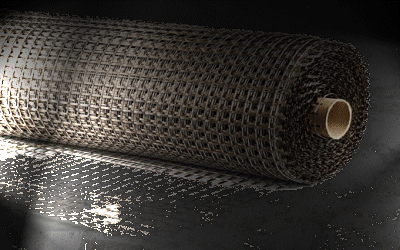 |
Mesh can be laid under both hot-mix or cold mix asphalt concrete, as well as under chip and spray surface treatments. In addition, StoneRod fibre can be mixed with the bitumen to provide a fibre reinforced asphalt road surfaces. The fine, discrete fibres, produce enhanced bonding between the aggregate and the asphalt. More information and test results can be obtained by requesting our Asphalt Data Sheet, which is available in "pdf" format.
 |
We pride ourselves on our professional service, market knowledge, quality, and most competitive prices.
Return to Top of Page.